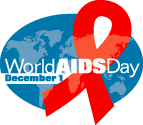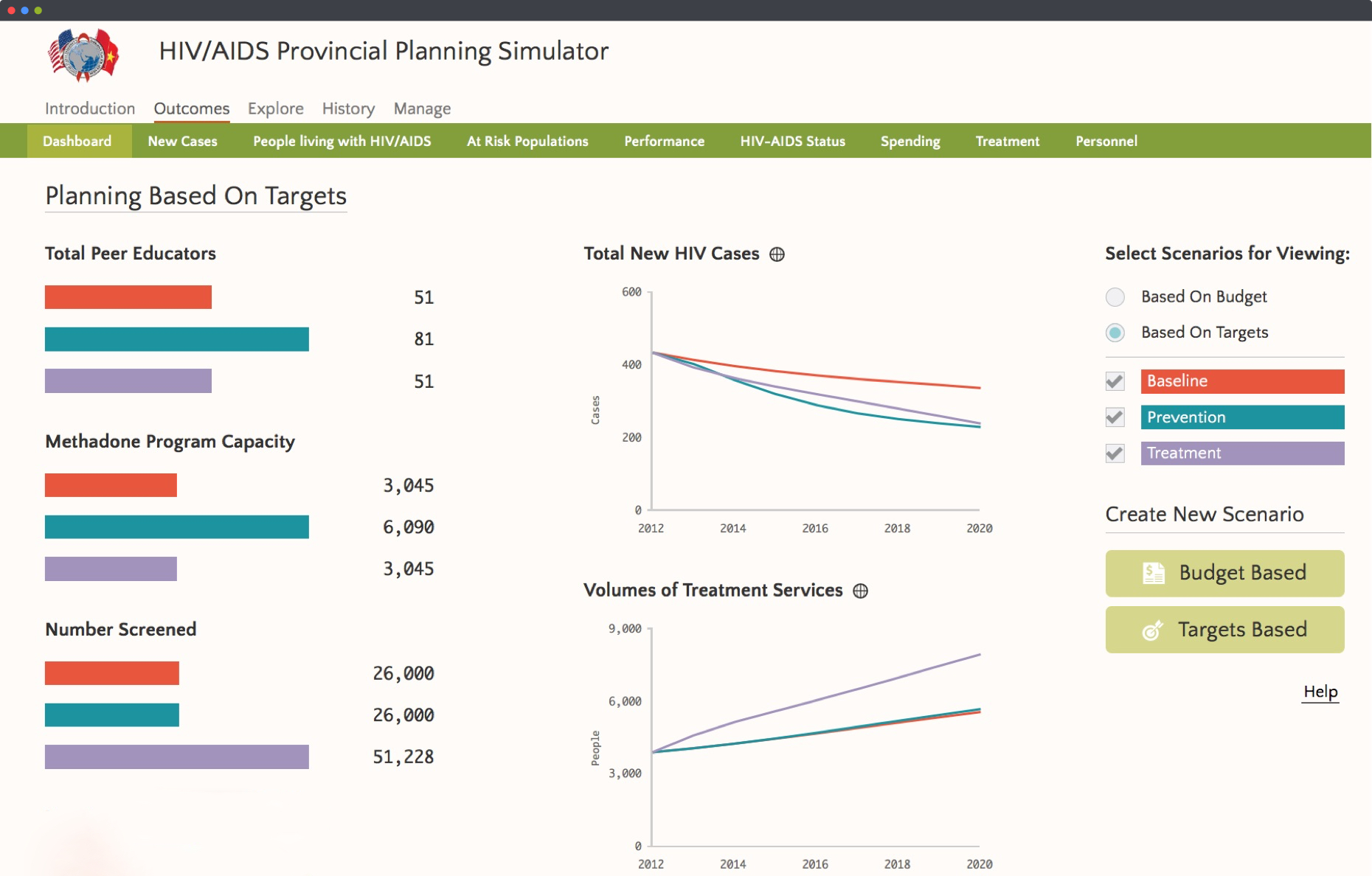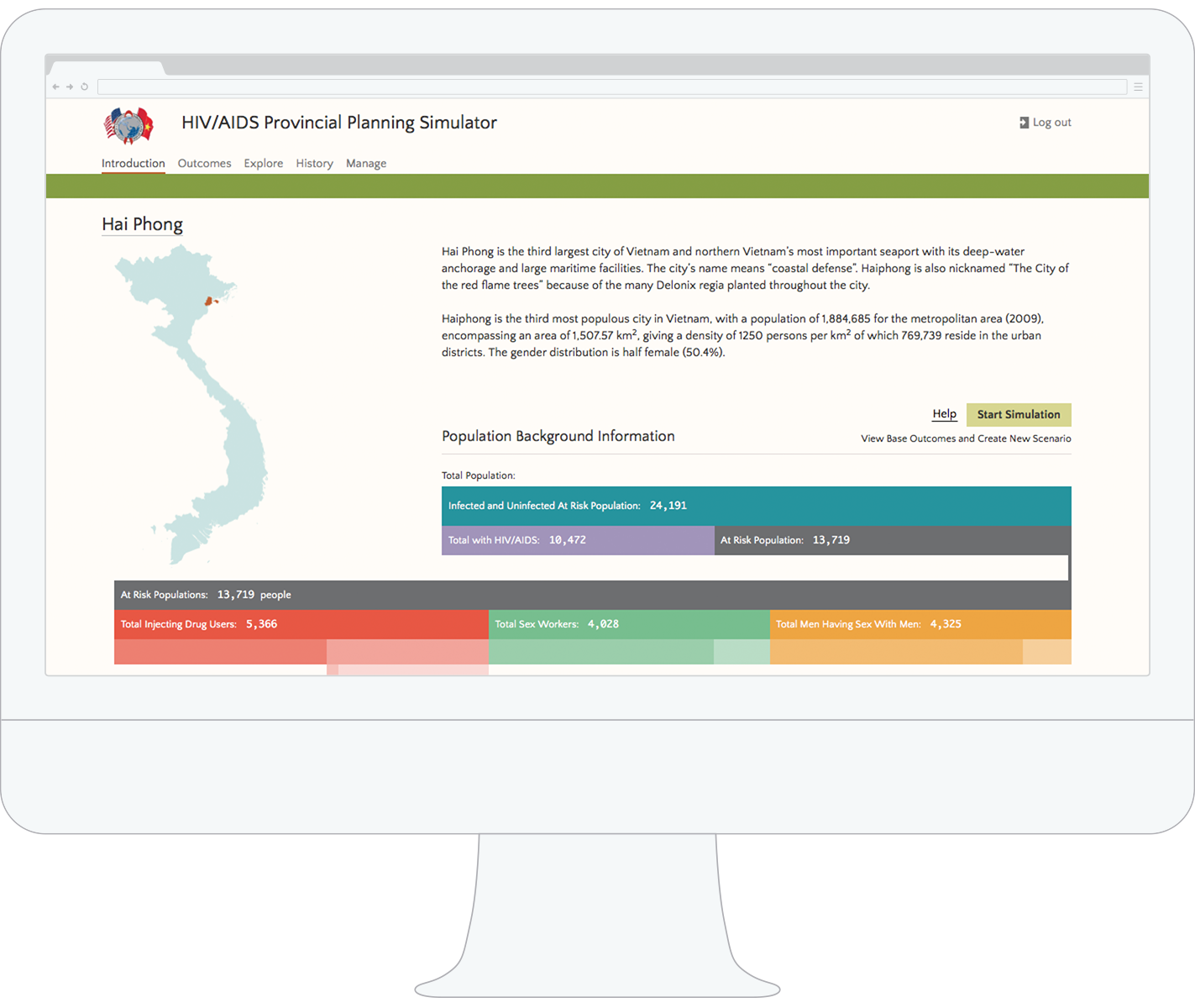Management Sciences for Health, Vietnam: Connecting Experts
World AIDS Day is upon us and, as always, it’s a time for reflecting on our progress and looking forward to how we can continue to address HIV/AIDS through prevention and treatment.

At Forio, this year’s World AIDS Day marks over 3000 people having used the HIV/AIDS Provincial Planning Simulator that we developed together with the Leadership, Management & Governance - Transition Support Project (LMG) in Vietnam. This simulation allows local healthcare practitioners to plan for prevention and treatment interventions and share their expertise through an accessible online tool.
Building a Model
Much of the funding for HIV/AIDS prevention and treatment in Hai Phong, Vietnam, comes through the U.S. Agency for International Development (USAID). As Vietnam’s economy continues to improve, however, its eligibility for USAID funding may decrease. Because of potential upcoming changes in amounts and sources of funding for HIV/AIDS prevention and treatment programs, the Vietnamese Management Sciences for Health (MSH) needed, in their own words, a tool “to provide comprehensive and insightful data to make a compelling case for a given strategy in the development of annual plans.”
The first part of making such a tool was developing a model, using a system dynamics approach. Through a series of workshops with local healthcare practitioners and the work of Gary Hirsch, a noted system dynamics modeler with particular experience in health issues and policy, MSH and Hirsh were able to develop a comprehensive model of interventions and outcomes.
Initially the model was a success. However, it proved difficult to use at scale. It required specialized system dynamics software to run. Additionally, it needed someone familiar with the software to input decisions from healthcare practitioners and then interpret the variables describing the outcomes — and that person needed to be bilingual, because the specialized software is not yet available in Vietnamese, and few of the local healthcare practitioners are fluent in English. MSH and their partners at LMG realized something had to be done to make the model more accessible.
Connecting Experts with a UI
This is where Forio’s expertise comes in. At Forio, it’s our business to help make models and analyses of all kinds accessible to broader audiences. We believe that sharing explorations, building common vocabularies, and experimenting for yourself are key to understanding and communication. We saw this simulation as a terrific opportunity to connect healthcare experts with system dynamics experts.
We partnered with LMG to develop a browser-based, localized user interface for the model. Today, this simulation can be used by anyone with a web browser and an internet connection, in both Vietnamese and English. Users work with basic web forms to enter decisions, then review the outcomes of the model in a series of charts and graphs. Plus, the sim includes different levels of users and permissions: so while casual, anonymous users of the simulation can experiment on an ad hoc basis, local healthcare practitioners have unique logins and can save and compare scenarios from across multiple working sessions.

Using the Simulation: Focus on Outcomes vs. Focus on Funding
The simulation starts by loading “initial conditions”: background data concerning at-risk populations and current intervention programs, supplied by the MSH for each of several provinces in Vietnam.
Then, healthcare practitioners choose whether to create their scenario based on targets or based on budgets. Their goal is to select interventions, build out different scenarios, and compare the outcomes, then communicate those findings to colleagues and potential funders.
-
Creating a targets based scenario means experimenting with different target levels for specific interventions. This mode of working with the sim allows practitioners to answer the question: “What would it take … “ to achieve a target a outcome.
For example, if you can increase the percentage of injecting drug users accepted into methadone clinics, how much would that cost? And what impact does that have on the rate of new cases of HIV? If you can double the percentage of men having sex with other men who have access to condoms, what are the cost implications? And what does that do to the total number of people infected with HIV five years from now?
-
In contrast, creating a budget based scenario means focusing on spending set amounts of money for specific interventions. Practitioners can adjust the budget amounts from a variety of sources as well as broad categories of budget allocation. This mode of working with the sim allows practitioners to answer the question: “What could we do with …” particular funding amounts.
For example, if you increase the out-of-pocket payments from consumers, but also increase the local government funding, and then split the extra revenue between screening and funding for peer educators, which at-risk populations benefit? On the other hand, if funding from international agencies is cut in half, what does that to do the rate of infection, and in which populations?

The Value of Communication
The introduction of a simple web-based user interface (especially one available in both Vietnamese and English) has transformed communication around the model in two ways.
First, local healthcare practitioners in Hai Phong and other provinces are able to work with the model themselves, rather than through a series of interpreters. The UI empowers practitioners by allowing them to explore the model without an arbiter or specialized training.
Second, practitioners are able to share their results with others. Being able to present and discuss recommendations allows for continued dialog and a shared vocabulary and experience. For example, comparing different scenarios from the budget based mode is one tool that practitioners in Hai Phong are using to persuade funders — including both the Vietnamese government and various national and international NGOs — of the value and direct impacts of particular funding levels.
Because of an easily accessible, web-based UI, modelers can share insights with healthcare and policy stakeholders, and practitioners can share insights with government and NGO funders. This ability to connect experts from different disciplines is crucial to continued success in HIV/AIDS prevention and treatment.
Try it Yourself
While you’re probably not a healthcare practitioner working with the populations described, the sim is available for anyone to play with: HIV/AIDS Provincial Planning Simulator. Here’s how:
- Select a province and a language, then select Continue as Guest.
- Review the baseline information, then select Start Simulation.
- From the right side of the Dashboard, choose to create your own scenario, either Budget Based or Targets Based.
- Then, edit your scenario values and assumptions.
- Next, select Simulate.
- The summary results from your scenario appear on your Dashboard. Using the menu bar across the top, dive into the details of comparing your scenario(s) to the baseline for new cases, total population, breakdown by at-risk populations, and performance. (For more background, see the complete User Guide within the sim, which walks through several detailed scenarios as well as explaining the details behind the model itself.)
You’ll see for yourself how easy it is to experiment with the simulator. Try building a scenario that focuses on treatment, and then one that focuses on prevention, to see how the outcomes differ. Or challenge yourself to reach a particular target infection rate.
While the guest login feature does not include the ability to save or share scenarios, it’s a great way for anyone to see how working with the combination of model and user interface make policy discussion and evaluation accessible to a broad audience. Using a simple browser-based UI means creating a shared experience, bringing more people into meaningful discussions to help solve the difficult problems we still face in our collective work against HIV/AIDS.


